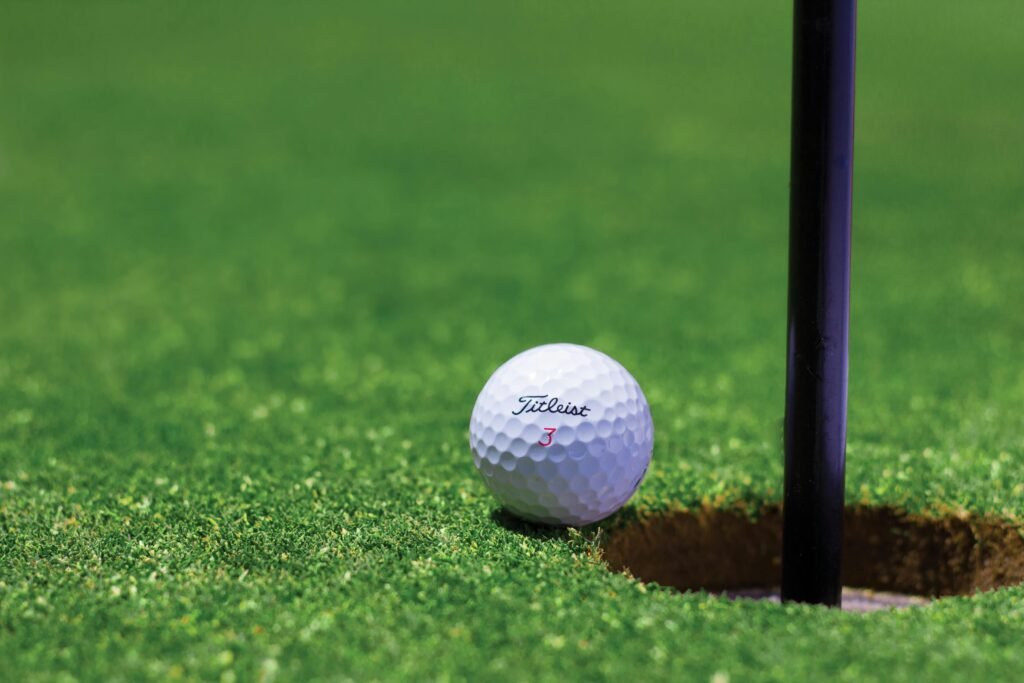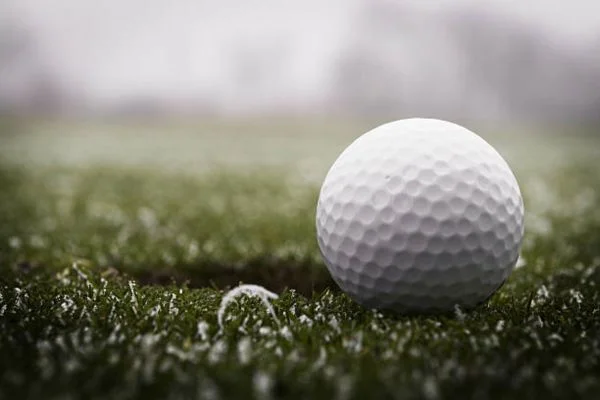If you’re a golf enthusiast, you may be used to playing during warmer months. But don’t let cooler temperatures keep you from getting out on the links. Believe it or not, the right golf ball can make all the difference in enjoying a successful game in cold weather. Keep reading to learn more about what’s the best golf ball for cold weather?
The best golf ball for cold weather in 2024 is the Titleist Pro V1. Its advanced technology ensures optimal performance in colder temperatures, providing both distance and control on the course.
The best golf ball for cold weather is one with a soft compression and a urethane cover. Options like Titleist Pro V1, Callaway Chrome Soft, or Bridgestone Tour B RXS provide excellent feel, distance, and performance in colder temperatures,
What’s Different About Playing With a Cold-Weather Ball?
When choosing a golf ball for cold weather, some key factors come into play. For example, balls explicitly designed for colder temperatures tend to have firmer covers, allowing them to retain their spin longer and fly farther due to less drag from the air.
In addition, many cold-weather balls have softer cores that help them maintain their trajectory better in cooler temperatures. That said, if you want a ball that will perform well both in hot and cold conditions, there are also options available with dual-layer construction that offer optimal performance regardless of temperature.
Also Read: Why Does Golf Ball Not Swing?
What Should I Look For When Choosing a Cold-Weather Ball?

When selecting a golf ball specifically designed for colder climates, there are several things you should consider before making your purchase:
- Look for balls with urethane covers, as they offer more spin than those made with Surlyn or ionomer material.
- Choose balls with higher compression ratings, as they’ll hold up better in colder temperatures and still provide excellent distance off the tee box.
- Opt for multi-layered balls if you want something versatile to use year-round without sacrificing performance in extreme weather conditions.
Other things to consider are:
- Air Density and Distance: In colder temperatures, the air is denser, which affects golf ball performance. Balls tend to lose some distance due to increased lift and drag. They fly higher but drop shorter. If the ball itself gets very cold, its characteristics may change, resulting in lower initial velocity off the clubface.
- Compression: There are differing views on the best winter golf ball. Some believe softer compression balls help you hit farther in the cold. Others think harder balls carry better through the air and provide more overall distance, especially when fairways are soft.
- Visibility: Choose balls that are easier to track and find in gloomy weather or frosty conditions. Yellow golf balls are a good choice for visibility.
- Greenside Performance: Consider how the ball performs around the greens. Firmer balls may sacrifice short game control for distance.
Also Read: Are Nitro Golf Balls Any Good?
What’s The Best Golf Ball for Cold Weather Play?
So, what’s the best golf ball for cold weather? If you are an avid golfer, you know that the weather can drastically impact your game. One of the essential elements when playing golf in cold weather is which ball to use. Choosing the right golf ball for cold weather can help maximize your performance and accuracy on the course. Here are some of the best golf balls for cold weather play.

Titleist Pro V1 and Pro V1X
Regarding golf balls, the Titleist Pro V1 and Pro V1X are two of the most popular choices among professionals and amateurs. Both balls feature a thin urethane cover that provides excellent spin control, essential for accurate shots even in cold temperatures.
In addition, the Pro V1 has a slightly firmer feel than its counterpart, while the Pro V1X offers more distance off your tee shot due to its higher compression rating.
Pros:
- Thin urethane cover for excellent spin control.
- Pro V1 offers a slightly firmer feel.
- Pro V1X provides more distance off the tee.
- Popular choice among professionals and amateurs.
- Consistent performance in cold weather conditions.
Cons:
- Higher price point compared to some competitors.
- Limited color options.
Callaway Chrome Soft X & Chrome Soft
Callaway’s Chrome Soft X and Chrome Soft models are both solid picks when playing in cold weather. These two-piece construction balls offer excellent performance from tee to green and enhanced spin control with irons and wedges.
In addition, the Chrome Soft X provides more distance off each drive thanks to its thicker core, while the Chrome Soft gives you better control and accuracy around the greens due to its softer feel.
Pros:
- Two-piece construction for solid performance.
- Enhanced spin control with irons and wedges.
- Chrome Soft X offers more distance off the tee.
- Chrome Soft provides better control around the greens.
- Suitable for various skill levels.
Cons:
- May not suit players with extremely high swing speeds.
- Some users prefer a firmer feel for putting.
TaylorMade TP5 & TP5x
Finally, if you’re looking for a top-of-the-line ball that performs well in cold weather conditions, then TaylorMade’s TP5 and TP5x models should be at the top of your list.
These five-layer construction balls feature a soft outer cover that provides excellent spin control with long irons and wedges while offering maximum distance for each tee shot with their Tri-Fast Core technology. The TP5x is explicitly designed for players with high swing speeds, while the TP5 is ideal for all skill levels of golfers.
Pros:
- Five-layer construction for versatile performance.
- Soft outer cover for excellent spin control.
- TP5x designed for high swing speeds.
- TP5 offers maximum distance and control for all skill levels.
- Advanced Tri-Fast Core technology.
Cons:
- Higher price point compared to other options.
- Limited availability in certain regions.
Also Read: How To Stop Topping The Golf Ball?
Bottom Line: What Is The Best Golf Ball For Cold Weather?
So, what’s the best golf ball for cold weather? Now that you know what makes cold-weather golf balls different from summer models, it’s time to hit the course! With the right equipment and proper technique—and likely some extra layers—you can enjoy teeing off during any year’s season!
Doing your research ahead of time will help ensure maximum performance when playing under more excellent conditions, so pick out your perfect winter partner today and get back on the links!

